Presentation Skills 101 : Actionable tips to boost your pitch power
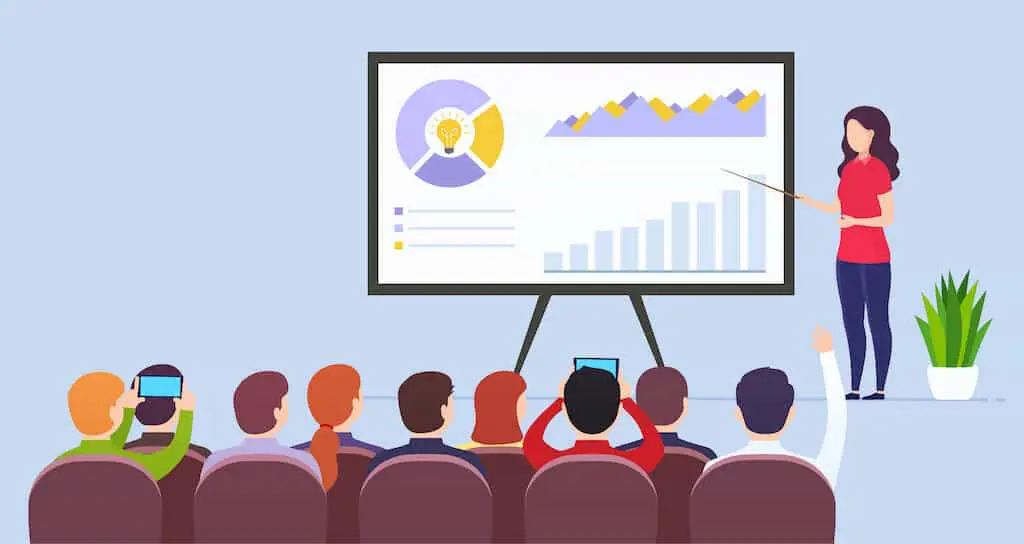
Want to polish your presentation skills ? Read this post to follow a structured approach for pitch deck design and development.
The temptation to pack in as much information as possible can undermine the person who is creating a presentation.
You think PowerPoint. The audience thinks pressure point. The SIMPLE filter is what transforms it from a pressure point to a pleasure point. We need to make sure that our slideshow does not end up as a horror show. To transform our slideshow into a magic show, we have a special six-stage filter called SIMPLE.
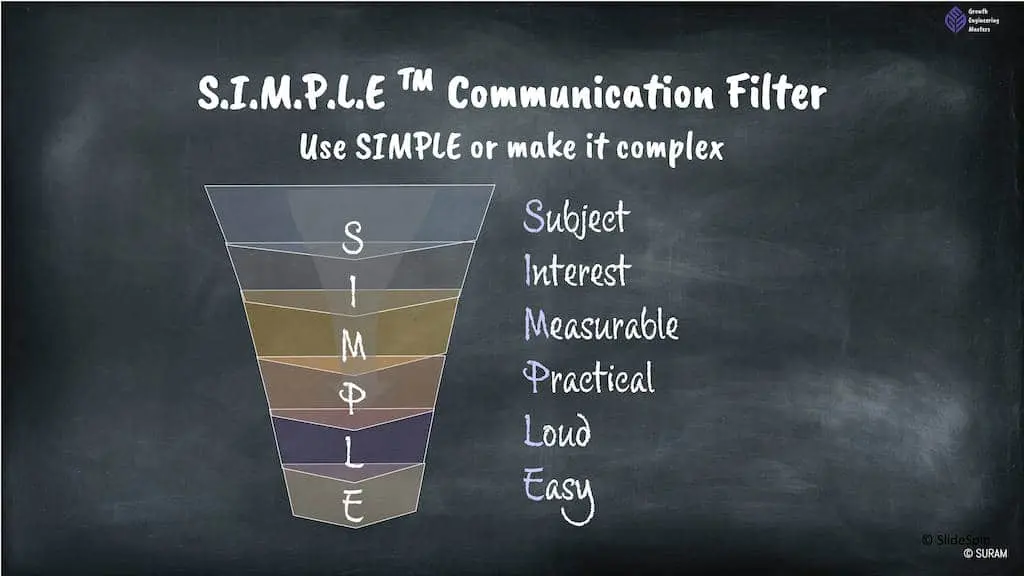
- Keep it relevant to the current subject or solution
- Cover listeners’ interest and context
- Make only measurable statements and claims
- Keep it practical and palatable
- Ensure all messages are loud and clear
- Make sure it is easy on the eye and the mind
Subject orientation
What is a subject? It is an idea or a concept that you want to sell to your colleagues or teammates. It could also be a solution, product or service that you are marketing to your prospective customers. Draw a boundary line and make sure that the content stays within that space.
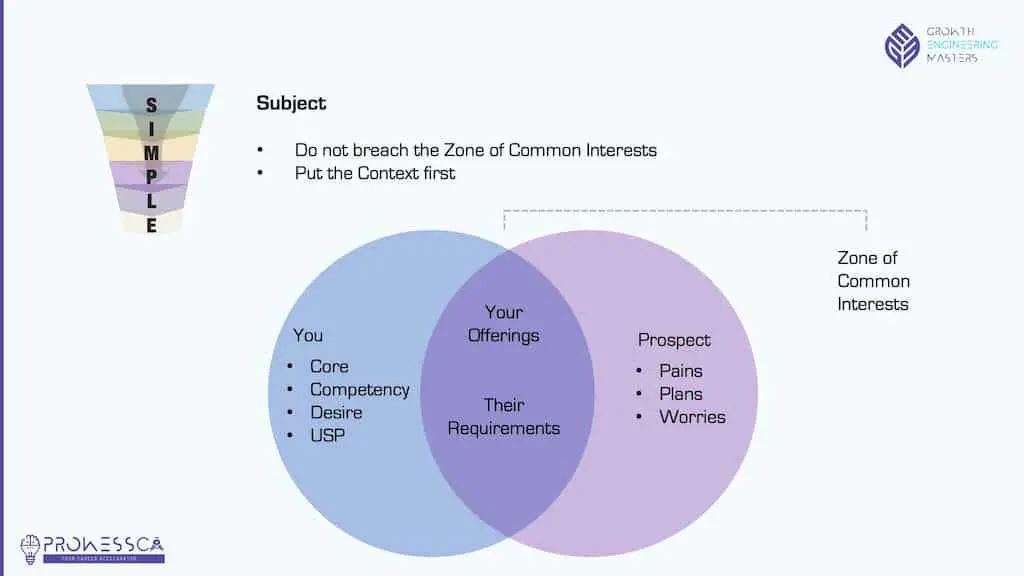
Each slide should contain references to the solution that the prospect is looking for. While it is incredibly tempting to showcase everything that we have, the prospect may not be interested in looking at all of them at once. By packing in too much, we are only diluting the main message.
Every slide should directly or indirectly strengthen the case in hand, that is, the solution we are providing or the problem that we are solving. If the topics we present do not refer to this central theme, then they are redundant. If the client finds your statements to be sensible, he or she will instantly acknowledge them unless they want to purposefully hold back the appreciation. The acknowledgement could be through body language or verbal statements. The client may then engage in a discussion post presentation.
Remember, if content is the king, context is the king maker.
Your context could be anything that falls within the zone of common interest. If you move out of this, you will find it challenging to come back.
How do we find the context?

Let us assume that we are expecting a very valuable prospect to visit our office and evaluate our products and services. A successful presentation will convert them to a prestigious client. This is our context. Therefore, we need to ask all the relevant questions pertaining to this context. We need to do precise participant profiling to understand the complete details of the participants.
- What are the stakes?
- What is the delegate or participant profile?
- What is the path that they are likely to take?
- What is the path that we want them to take?
- Are we on the same page?
- Do we have that AAA (Triple-A) rated person in the group?
- What are the questions that we need to ask them?
- What do we expect from them towards the end of the journey?
Setting the right path for your project is the most critical aspect of the whole journey. A job well begun is half done.At this stage, we have to find answers to a lot of questions. The more answers we have, the fewer the surprises. Try to respond to each of the following questions to obtain full clarity on the subject. You will be surprised to see how many details you had missed before this activity.
What are the stakes involved? (How important is this presentation to you or your organisation?)
This is by far the most important question. This question determines what you will win and what you are likely to lose, depending on whether the final pitch is successful or not.
The higher the stakes, the greater the number of hours of preparation needed involving more team members.
What is the duration of presentation? (The number of slides and placement of images should be determined by the duration)
Knowing the duration in advance will help you plan and sequence the steps in advance and space the key aspects uniformly across the presentation. Ensure that there is no room to commit another corporate crime again.
To the extent possible, ensure that:
- The presentation time does not exceed twenty minutes at a single stretch
- The number of slides is capped at twenty
- You factor in an hour of preparation time for each slide
How large is the presentation room? (We need to apply the colours and font sizes accordingly)
How many participants will attend? (Exclude the members from your team)
Who are all likely to attend this presentation?
- AAA Rated Person*
- Key people
- Opinion makers
- Trouble maker
- Brand ambassador
- Fence sitter
- Other neutral participants
Who is a AAA Rated Person?
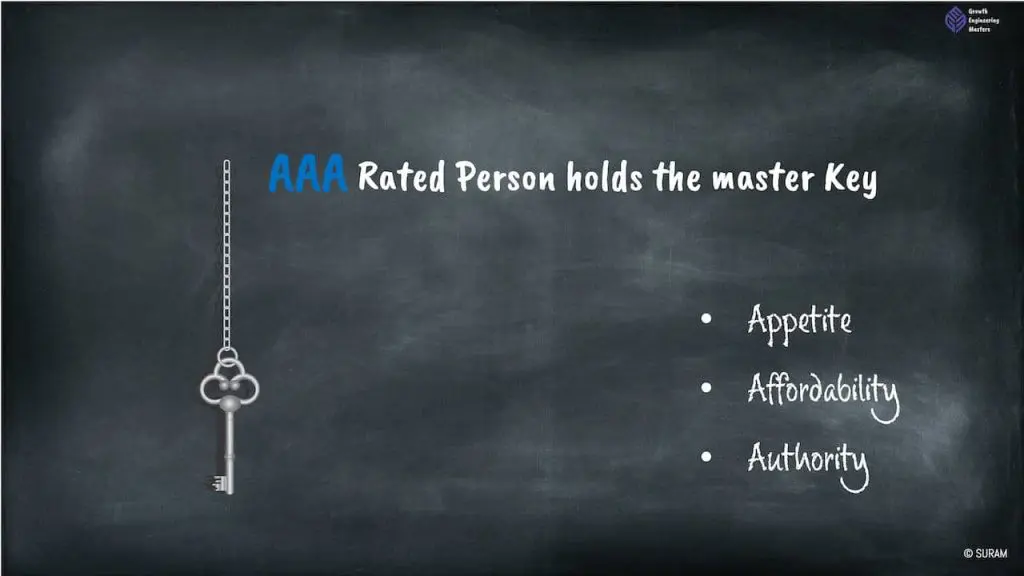
While making investments, we always check the the stock or bond to make sure that it has the highest rating or the AAA rating.
Similarly, we need to employ a similar strategy to deal with the person with the AAA rating.You can identify them based on following attributes:
- Appetite
- Affordability
- Authority
This person may or may not have the need, but if they have the appetite for our solution, it is sufficient for making our pitch. If you are not convinced, take a look at your surroundings. You will find many people playing with their smartphones and others who wear more gadgets than clothes. We are referring to those who use more than one smart phone, Bluetooth devices, wearable fitness trackers, iPods and so on.
Similarly, if you are in a position to determine the affordability and possesses the authority to make decisions, then we are talking to the right person.
People who do not qualify on these three aspects cannot make the decision independently. We can still speak to them because they may be the opinion makers but the person with AAA rating is the ultimate.
- What are their knowledge levels on the subject we are going to present? – For AAA Rated Person
- What are their knowledge levels on the subject we are going to present? – Troublemaker
- What are the top five things that they expect from us?
- What are the top five things they like?
- What are the top five things they dislike, are uncomfortable or anxious about?
- What are the top five questions we need to ask them before the presentation?
- What are the top five questions we need to ask them during the presentation?
- What are the top five questions we need to ask them after the presentation?
- What are the top five assumptions we need to list out before or during the presentation?
- What are the top five topics we want to discuss?
- What are the top five takeaways of the presentation?
- What are the questions we need to ask them? Remember, you will earn more respect and you will instil more confidence by asking the right questions than answering them well.
- What do we expect from them at the end of the journey?For example, do we want them to write a cheque immediately or should they just applaud and leave.
- Which are the authentic sources of information we referred to for the presentation?
- Who has this information within the organisation and what are their stakes in this project?
At this stage, you might be wondering. “Is it necessary to go through so much of pain to improve my presentation skills?”
The answer is yes. Although this looks like a long list, it takes less than an hour to draw it up and in turn it will save you and others many productive hours.
Interest
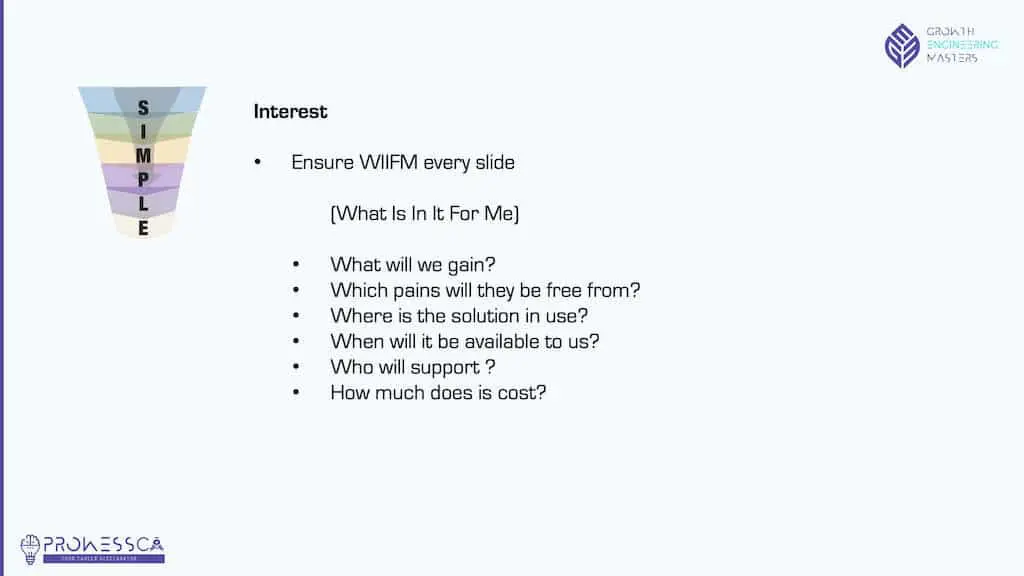
Will a client give you business because they want to make your balance sheet look better?
The two words, ‘information’ and ‘communication’ are often used interchangeably, but they signify different things. Information is giving out; communication is getting through.
– Sydney J. Harris
Similarly, will your boss listen to you just because he is committed to doubling your salary this year?
No. People listen when it is relevant or is of interest to them. Everyone wants to find the answer to their original question: What is in it for me? Nothing else matters.
Measurability
It is either measurable or miserable.
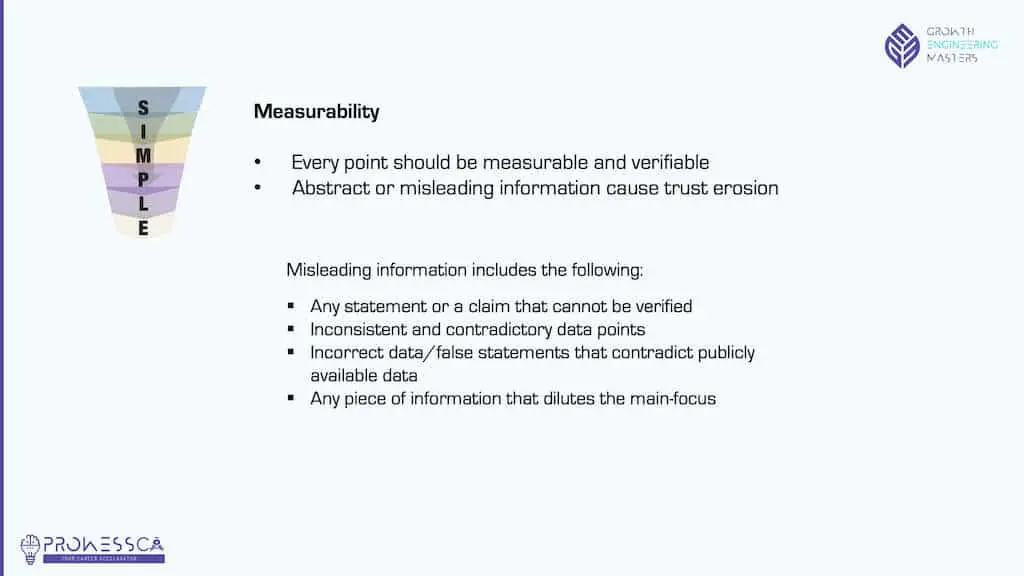
As the famous quote, “In God we trust, others need to bring the data.” implies it is important to present relevant data in each slide. Facts and figures in the presentation enrich the quality of presentation to a great extent.
Always remember two things while presenting the data:
- Present the right data
- Present the data right
If it is abstract, it is misleading. Drop it. Misleading information include the following:
- Any statement or a claim that cannot be verified
- Inconsistent and contradictory data points
- Incorrect data or false statements that challenge publicly available data
- Any piece of information that dilutes the main focus or distracts the audience from the prime mover item
- Drop any information that is misleading
- Any information or claim that is not quantified will not qualify.
- If the information is verifiable, it becomes reliable.
- When the information becomes insight, it becomes digestible and memorable.
From Information to Insight.Ask the following questions before presenting insights:
- How relevant is the information?
- Will it be of interest to the audience?
- Can we interpret the information properly?
If we have a piece of information that is of reasonable importance and if we can interpret it properly, it becomes a useful insight.
Practicality
We need to make sure that the statements we make and the ideas we propose are practical. They need to be palatable and realistic.
Loudness
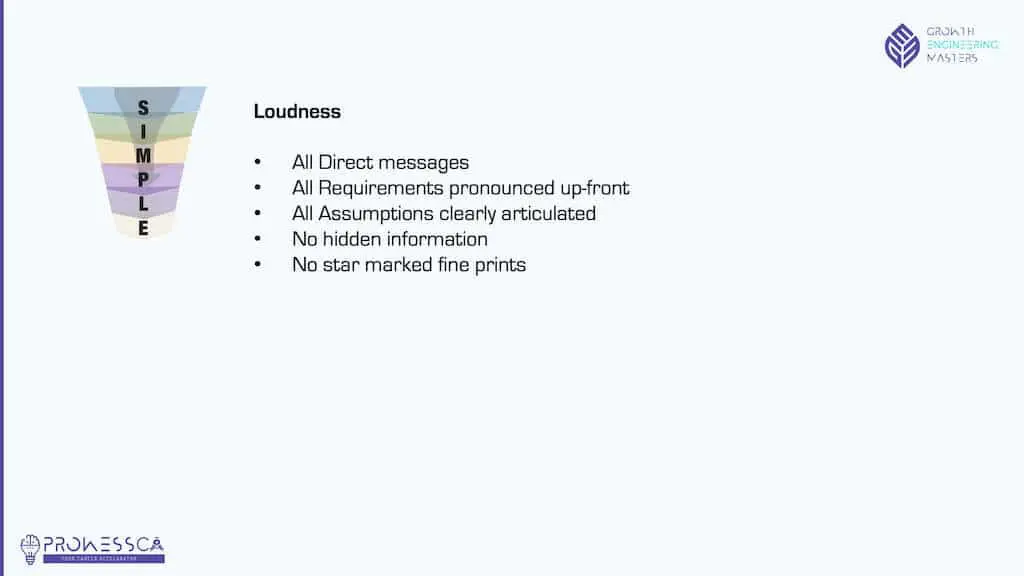
Points should be direct and convey the meaning loud and clear. Indirect or ambiguous messages will confuse, distract, and bore the listeners.
State the benefits, possible issues, and expectations upfront without beating around the bush. Everyone appreciates a candid approach.
“Words – so innocent and powerless as they are, as standing in a dictionary, how potent for good and evil they become in the hands of one who knows how to combine them.”
Nathaniel Hawthorne
Direct messages send the right signals. Indirect messages weaken the signal and increase the noise. You need to maintain an optimal signal strength to noise ratio to tune the audience.
If you are a frequent flyer, you would have heard the flight announcements several times. Every time I listen to the muffled voice of a pilot through the public address system, it leaves me fuming. “How can even the smartest and most sophisticated pilots get the basic communication rules wrong?”
Here is a sample of what you hear in most cases and our involuntary responses to the same:
“Good morning, passengers. I am your captain speaking. ….. ” Ok, Good
“We are currently cruising at an altitude of 33,000 feet…” What does it mean? Are we in the right direction? Are you in touch with ATC?
“We are maintaining an airspeed of 400 nautical miles…” Where is the conversion calculator? How fast or slow are we going? Are we on time?
“The outside air temperature is -5 degrees Celsius.” What about temperature inside the aircraft?
“We are facing mild turbulence. Return to your seats, sit back, relax and enjoy the experience.” Will we be landing eventually? If so, when? Until then, could you please switch to English?
Now you understand the need to develop strong presentation skills !
Ease
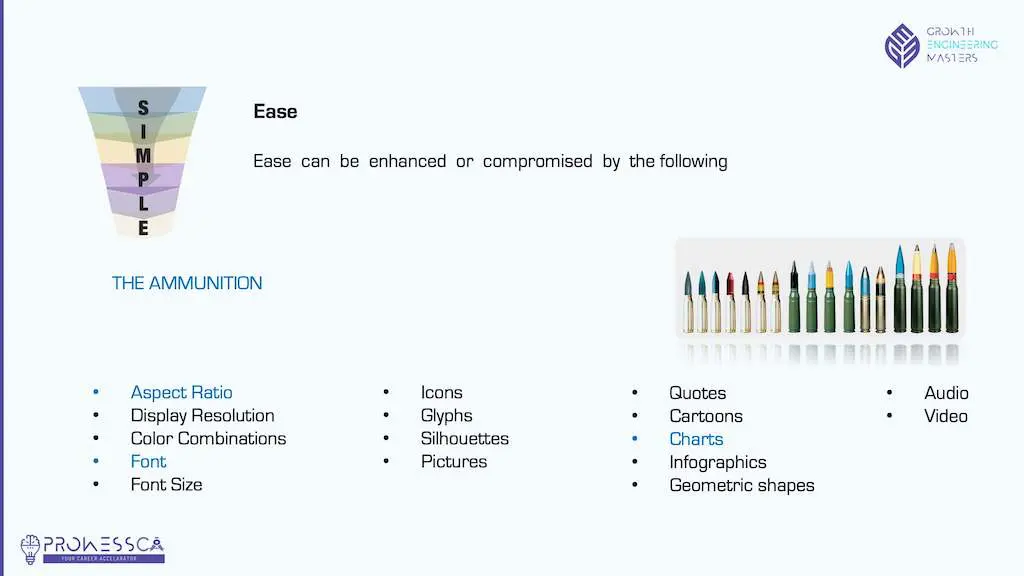
The presenter and the audience are at the core here. They should be at ease with the slides. The presenter should be quickly able to explain to them effectively and the audience should not find it challenging to understand.
Ease of understanding can be enhanced or compromised by the following:
- Text
- Text size
- Numbers
- Charts
- Colours
- Fonts
- Layout and formatting
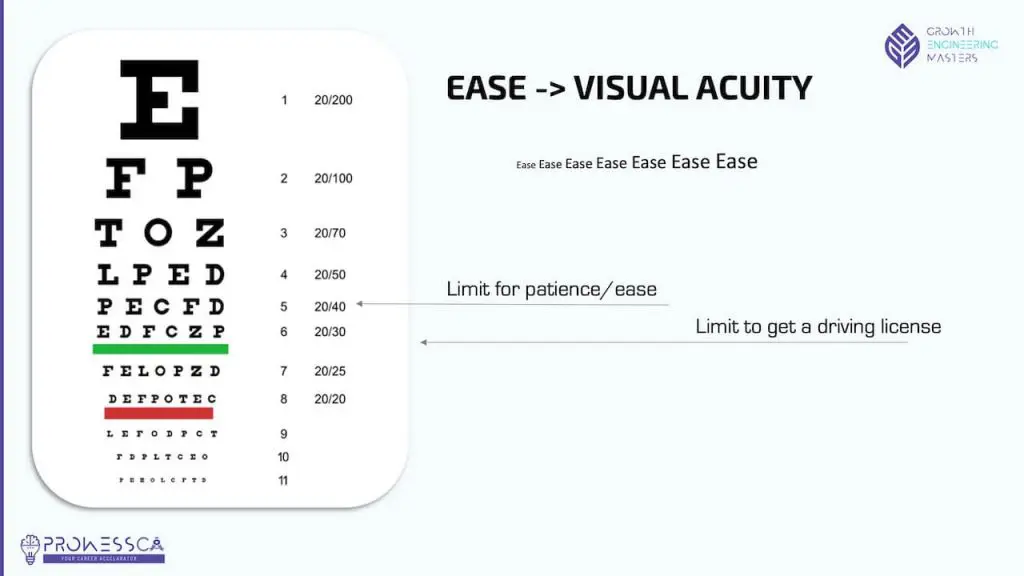
Look at the visual acuity diagram below. If you are not able to read the lettering in row 7, don’t pick a text size that is smaller than the one in row 5.
When the audience need an eye test or patience test, they will visit appropriate places. We don’t need to test them. We also don’t need to give them a treasure hunt experience.
What is commonamong the following classes of successful people?
- Politicians and statesmen
- Renowned lawyers
- Film actors
- Award-winning stage performers
- Ted talk presenters
- Sports personalities
They all understand the need to connect with the audience to drive their message. They spend significant time planning, preempting, preparing and practicing for their performances. For a twenty-minute Ted talk, some presenters rehearse for nearly 200 hours.As stated by Benjamin Franklin, “By failing to prepare, you are preparing to fail.” So preparation is the key.Many novice presenters get into a situation called ‘selective mutism.’ It is a condition where the person becomes temporarily disabled or muted.
This can be avoided by following a structured preparation method. There are also many courses on presentation and public speaking skills. Books, workshops and training sessions prescribe several remedies starting from simple body language tips to complex yoga postures. While my objective is not to undermine those techniques, I can tell you one thing with certainty:
If you follow the steps and procedures mentioned above, your passion will drive your performance. You can experience it yourself. There is no shortcut to preparation. The SIMPLE method gives you a structure and direction. Assuming that you have a remarkable product or solution to offer, a presentation developed and delivered using this approach will increase the probability of your success by several notches.
SIMPLE method is a simple way to polish your presentation skills.
However, we need to complement the effort put in so far with other things. Unless you are at a swearing-in ceremony, you cannot read out what’s written on the paper or projection screen. You need to write a script that complements what’s being projected on the screen.
You need to help the audience visualise the solution by walking them through a lane that illustrates their pain and gain.
Once they estimate their losses and gains, they will look at you as a credible person and consult you for a solution.
Body language and presentation skills
While you may have developed a stunning presentation, you will still need to deliver the same in a confident and credible manner. The audience tends to pick up cues from your gestures which in turn can lead to the misinterpretation of your message or content of the slide.
Mainly, you need to be confident about your body language before others try to interpret it differently.
It would be best if you adopt gestures that improve your credibility and enhance others’ confidence in you.
While many books and courses do offer sound advice in this area, practice the following always for better results:
Today’s technology allows us to rehearse and get instant feedback. Your smartphone becomes your best friend.
Download the app called Prompster Pro or something equivalent, to record and playback your script. As the name suggests, this app prompts you while talking so that you don’t need to look at the projection screen.
Adjust and modulate the tone to emphasise on the topics, establish good eye contact with relevant people to target the messages.
Most importantly, always present factual data and speak the truth. Speaking the truth and conveying what you believe in does not require special preparation.
Shortcomings on your body gestures can seriously undermine your presentation skills
Read the next post on Presentation skills 101
Read my book on presentation skills development : Slidespin
Take my course on presentation skills development at our learning portal
To Sum up
In this information age and connected world, presentation skills play a vital role in career/business success. A great presentation could make or break a product, an idea…a career!
Despite being widely accepted, we see lot of gaps in our presentation skills in this area even today.
Over 90% of professionals feel limited by the tools, thoughts and techniques to express their ideas. ‘Thought constipation’ can play havoc and limit various opportunities.
My books and courses help you unfold and unlock your full potential by explaining why it is vital to be able to present your ideas as best as possible, and more importantly, how to leverage your presentational skills like the world’s most successful leaders and entrepreneurs.
We approach the topic in an incredibly easy and relatable way: you don’t need to be a design guru or a technology expert in order to understand the insights featured within this book or course

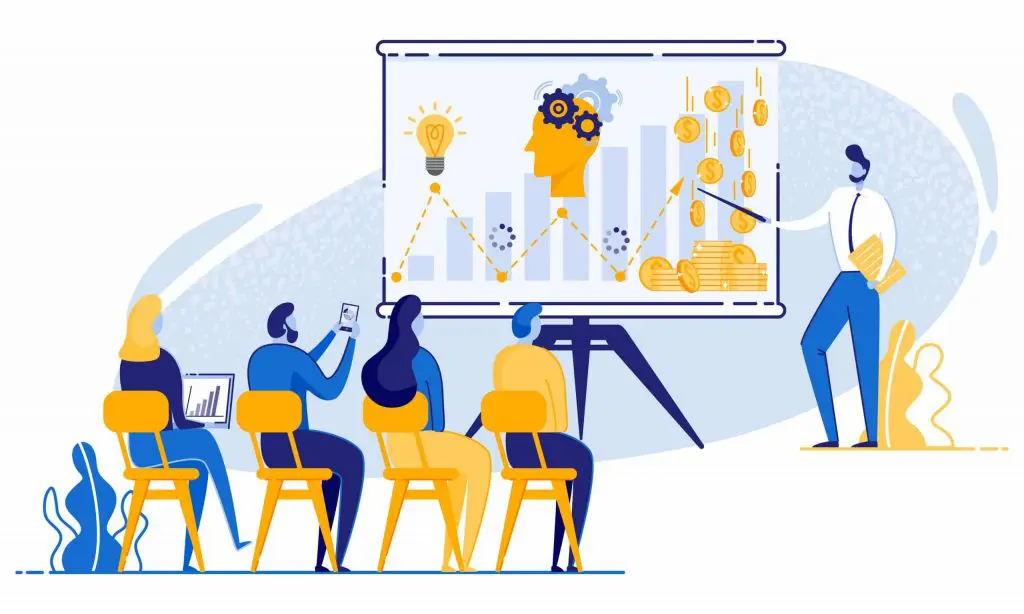

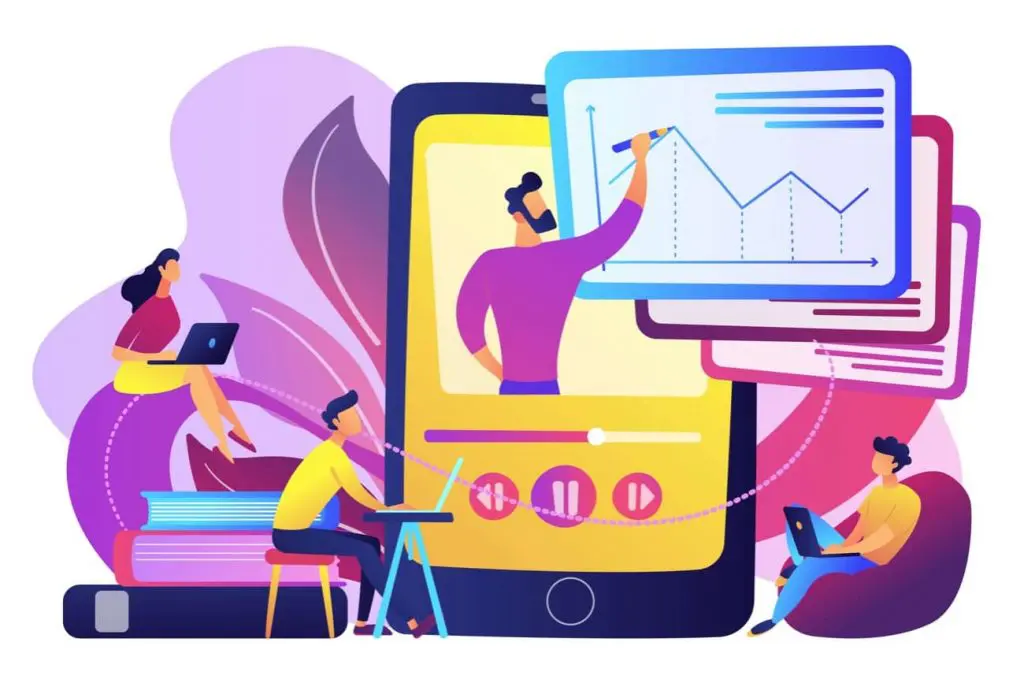

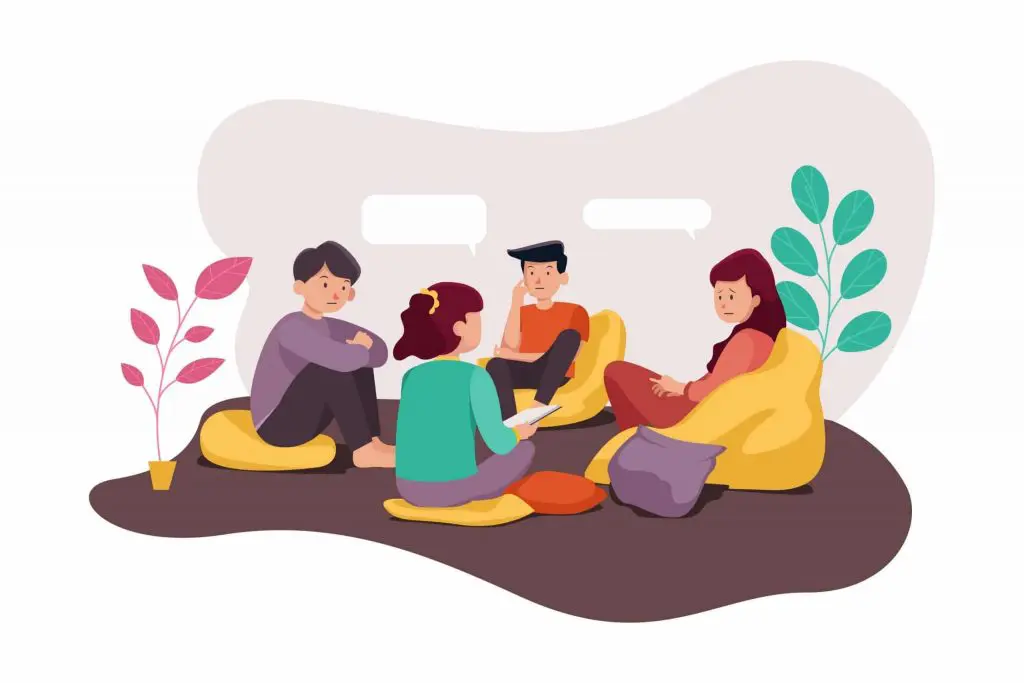
Responses